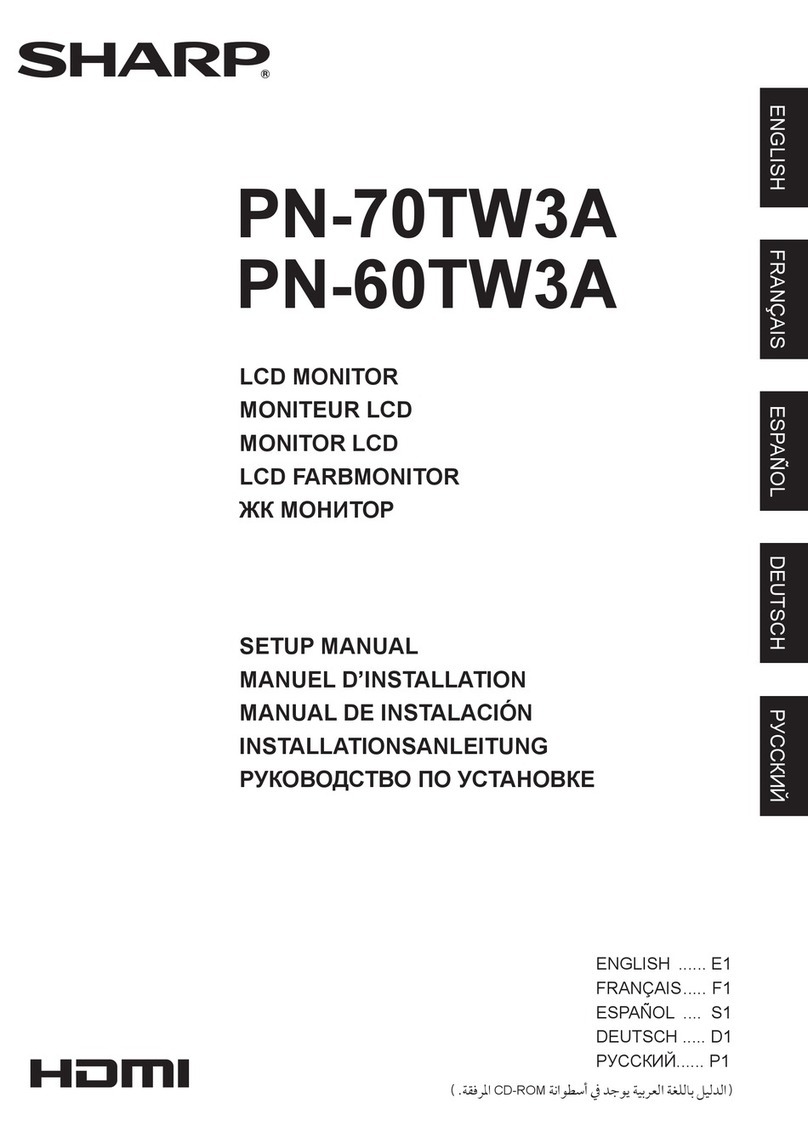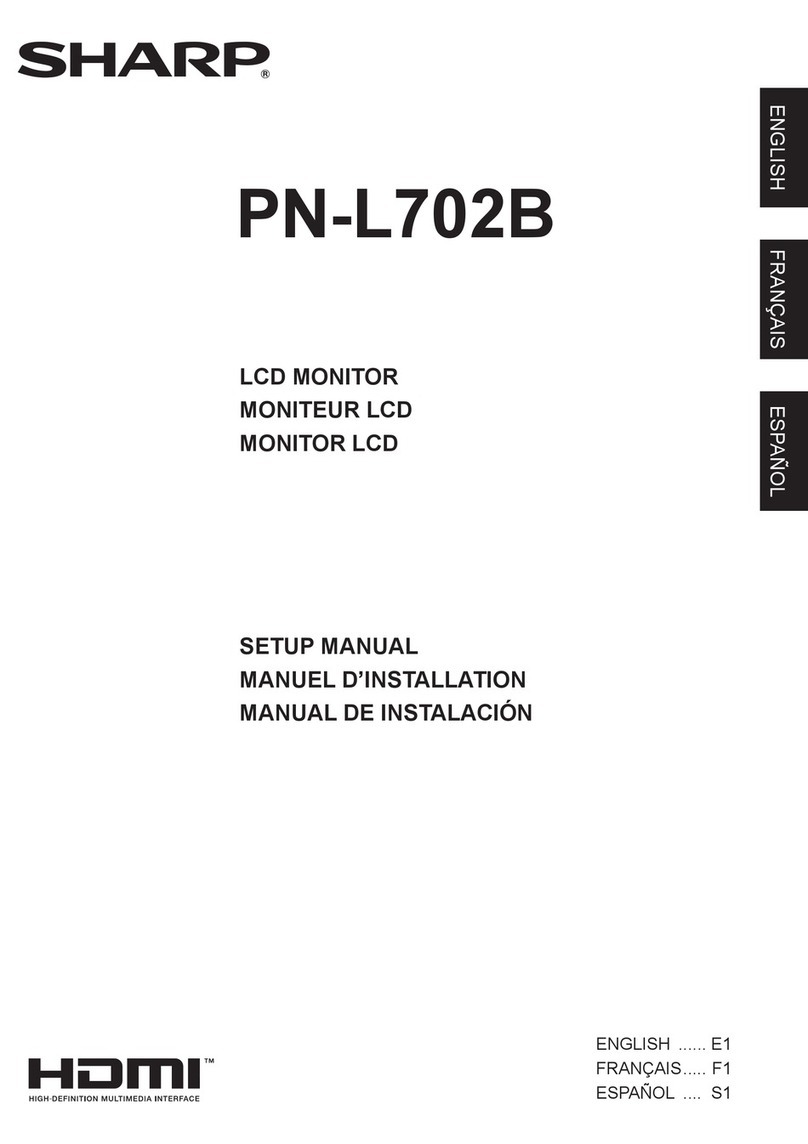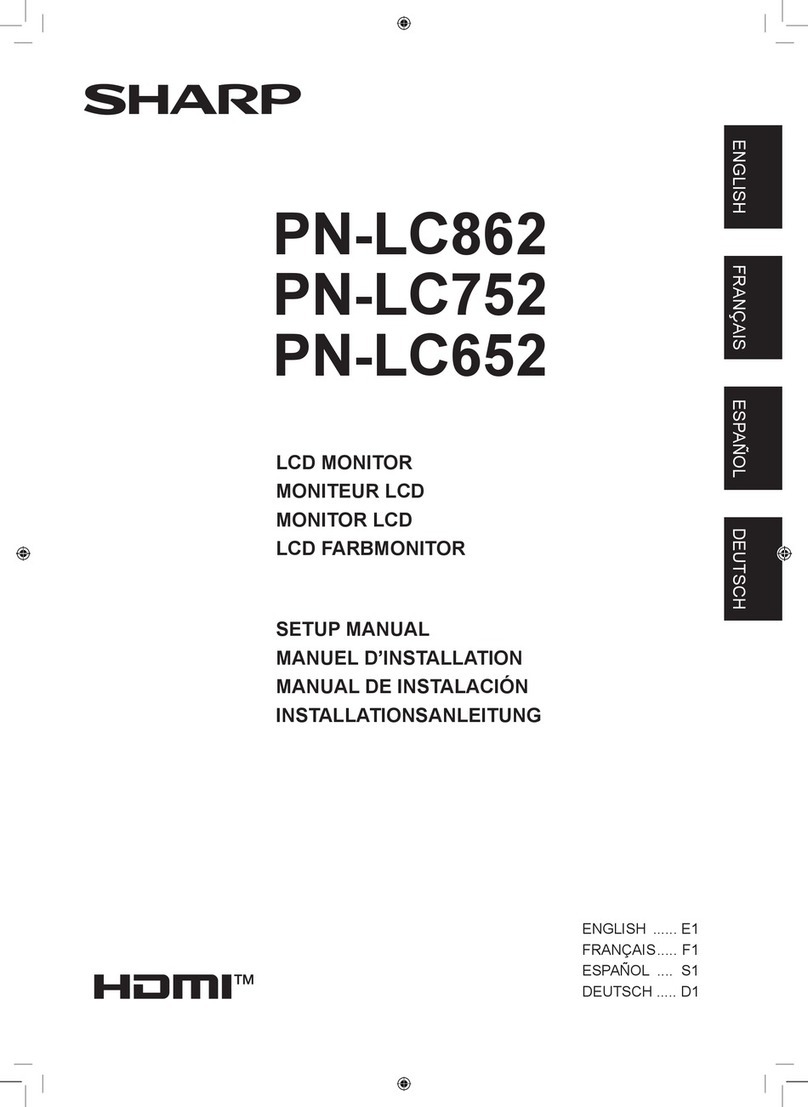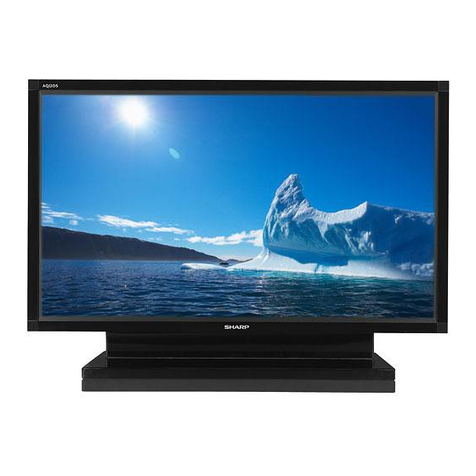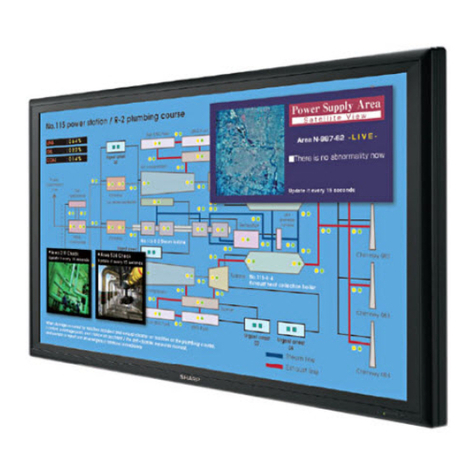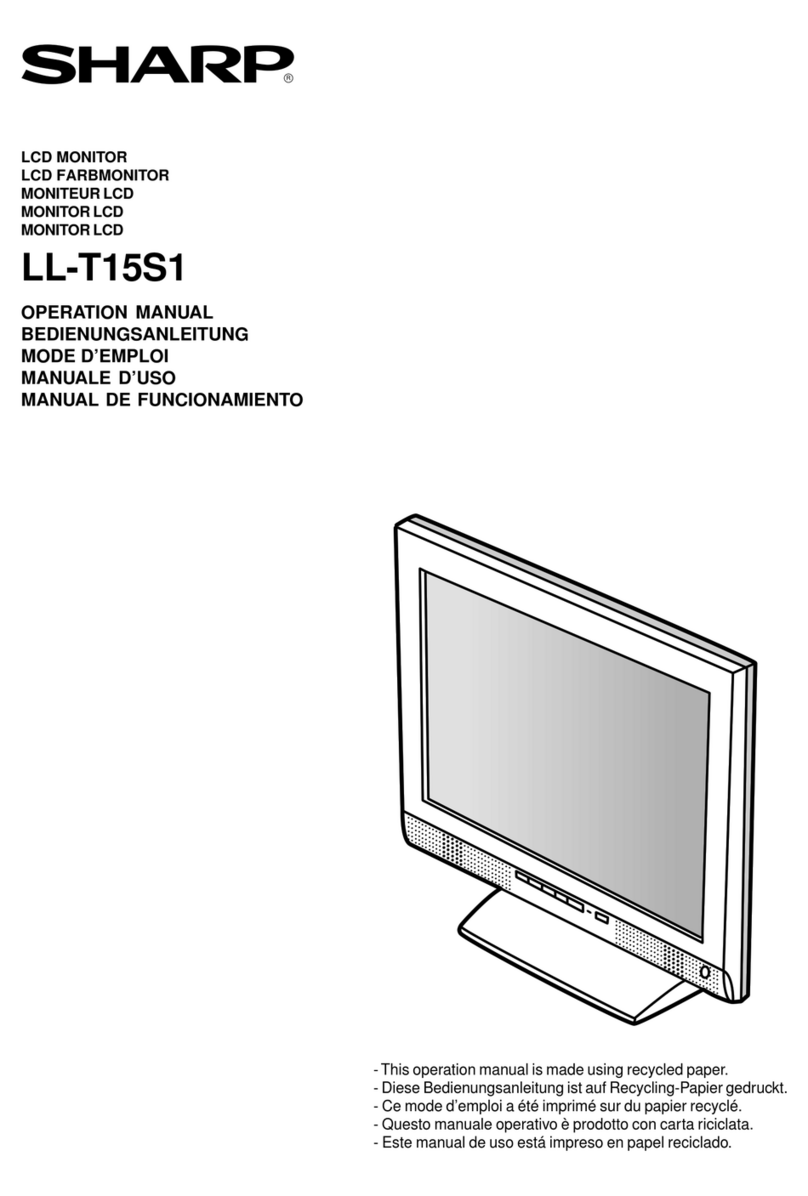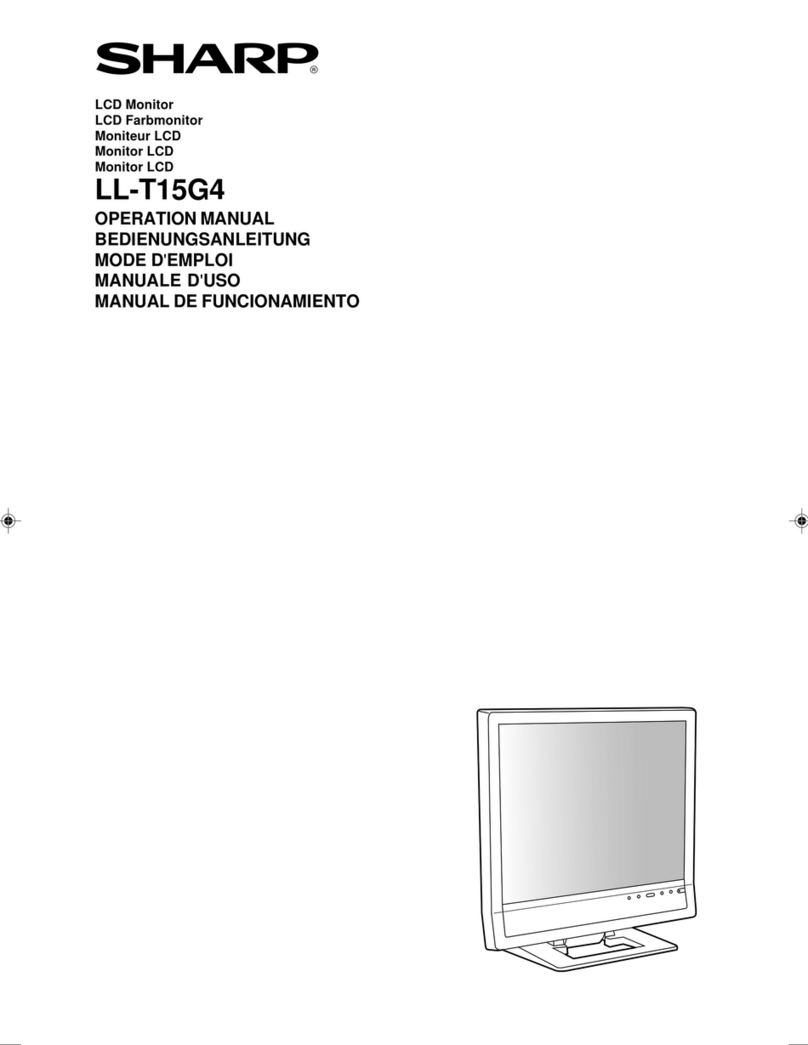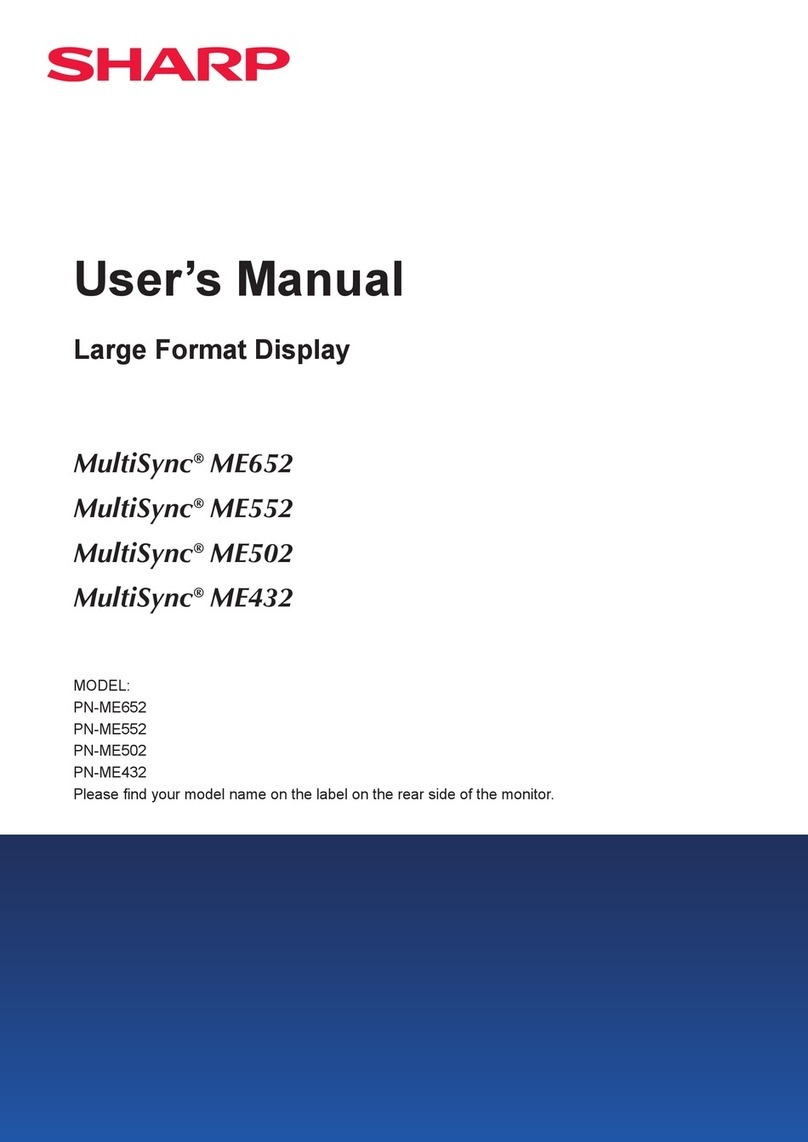2
LC-20VM2E LC-121M2E
LC-150M2E
1. IMPORTANT SERVICE SAFETY PRECAUTION
æ Service work should be perfomed only by qualified service technicians who are
thoroughly familiar with all safety checks and servicing guidelines which follow:
WARNING
1. For continued safety, no modification of any
circuit should be attempted.
2. Disconnect AC power before servicing.
CAUTION
FOR CONTINUED PROTECTION
AGAINST A RISK OF FIRE REPLACE
ONLY WITH SAME TYPE FUSE. F702 (2A,
250V), F703 (2.5A, 250V), F7751 (5A, 250V)
FUSE.
BEFORE RETURNING THE MONITOR
(Fire & Shock Hazard)
Before returning the monitor to the user,
perform the following safety checks:
1. Inspect all lead dress to make certain that leads
are not pinched, and check that hardware is not
lodged between the chassis and other metal
parts in the monitor.
2. Inspect all protective devices such as non-me-
talliccontrolknobs,insulationmaterials,cabinet
backs, adjustment and compartment covers or
shields, isolation resistor-capacitor networks,
mechanical insulators, etc.
3. Tobesurethatnoshockhazardexists,checkfor
current in the following manner.
• PlugtheACAdaptordirectly intoa100~240volt
AC outlet, and connect the DC power cable into
the monitor's DC jack. (Do not use an isolation
transformer for this test).
• Using two clip leads, connect a 1.5k ohm, 10
watt resistor paralleled by a 0.15µF capacitor in
series with all exposed metal cabinet parts and
aknownearthground,suchaselectricalconduit
orelectricalgroundconnectedtoanearthground.
• Use an AC voltmeter having with 5000 ohm per
volt, or higher, sensitivity or measure the AC
voltage drop across the resisor.
• Connect the resistor connection to all exposed
metal parts having a return path to the chassis
(antenna, metal cabinet, screw heads, knobs
andcontrol shafts, escutcheon, etc.)and meas-
ure the AC voltage drop across the resistor.
All checks must be repeated with the AC Adap-
tor plug connection reversed.(If necessary, a
nonpolarizedadaptorplugmustbeusedonlyfor
the purpose of completing these checks.)
A V
Any reading of 0.3V RMS(this corresponds
to 0.2 milliamp. AC.) or more is excessive and
indicates a potential shock hazard which must
be corrected before returning the monitor to
the owner.
SAFETY NOTICE
Many electrical and mechanical parts in LCD monitor
have special safety-related characteristics.
These characteristics are often not evident from visual
inspection, nor can protection afforded by them be nec-
essarily increased by using replacement components
rated for higher voltage, wattage, etc.
Replacement parts which have these special safety
characteristics are identified in this manual; electrical
components having such features are identified by
“å”and shaded areasinthe
ReplacementPartsLists
and
Schematic Diagrams
.
For continued protection, replacement parts must be
identical to those used in the original circuit.
The use of a substitute replacement parts which do not
have the same safety characteristics as the factory
recommended replacement parts shown in this service
manual, may create shock. fire. or other hazards.
TO EXPOSED
METAL PARTS CONNECT TO
KNOWN EARTH
GROUND


